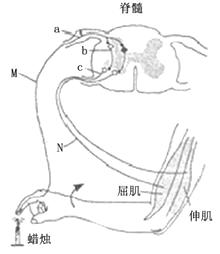1999年10月15日,A公司与B公司签订了一份加工承揽合同。该合同约定:由B公.司为A公司制作铝合金门窗1万件,原材料由A公司提供,加工承揽报酬总额为150万元,违约金为报酬总额的10%;A公司应在1999年11月5日前向B公司交付60%的原材料,B公司应在2000年3月1日前完成6 000件门窗的加工制作并交货;A公司应在2000年3月5日前交付其余40%的原材料,B公司应在2000年5月20日前完成其余门窗的加工制作并交货。 A公司应在收到B公司交付门窗后3日内付清相应款项。
为确保A公司履行付款义务,B公司要求其提供担保,适值D公司委托A公司购买办公用房,D公司为此向A公司提供了盖有D公司公章及法定代表人签字的空白委托书和D公司的合同专用章。A公司遂利用上述空白委托书和合同专用章,将D公司列为该项加工承揽合同的连带保证人,与B公司签订了保证合同。
1999年11月1日,A公司向B公司交付60%的原材料,B公司按约加工制作门窗。2000年2月28日,B公司将制作完成的6 000件门窗交付A公司,A公司按报酬总额的60%予以结算。
2000年3月1日,B公司发生重组,加工型材的生产部门分立为C公司。3月5日,A公司既未按加工承揽合同的约定向B公司交付40%的原材料,也未向C公司交付。3月15日, C公司要求A公司继续履行其与B公司签订的加工承揽合同,A公司表示无法继续履行并要求解除合同。C公司遂在数日后向人民法院提起诉讼,要求判令A公司支付违约金并继续履行加工承揽合同,同时要求D公司承担连带责任。
经查明:A公司与B公司签订的加工承揽合同仅有B公司及其法定代表人的签章,而先 A公司的签章。
要求;
(1)A公司与B公司签订的加工承揽合同是否成立为什么
(2)C公司可否向A公司主张加工承揽合同的权利为什么
(3)C公司要求判令A公司支付违约金并继续履行加工承揽合同的主张能否获得支持并说明理由。
(4)D公司应否承担保证责任并说明理由。
参考答案:(1)A公司与B公司签订的加工承揽合同成立。根据《合同法》的规定,当事人约定采用合同书形式订立合同,在签字或者盖章之前,当事人一方已经履行主要义务,对方接受的,该合同成立。在本案中,A公司虽未在加工承揽合同上签章,但已经实际履行了主要义务,且B公司已经接受,加工承揽合同成立。
(2)C公司可向A公司主张加工承揽合同的权利。根据《合同法》的规定,当事人订立合同后分立的,除债权人和债务人另有约定的以外,由分立的法人或者其他组织对合同的权利和义务享有连带债权、承担连带债务。
(3)首先,C公司要求判令A公司支付违约金的主张可以获得支持。A公司未按照加工承揽合同约定的时间向B公司支付40%的原材料,已构成违约,根据《合同法》的规定,应当承担违约责任,支付违约金。其次,C公司要求判令A公司继续履行合,同的主张不能获得支持。根据《合同法》的规定,在加工承揽合同中,定作人可以随时解除承揽合同。A公司作为定作人,可以解除合同,故无需继续履行合同。
(4)D公司应当承担保证责任,根据《合同法》的规定,行为人超越代理权以被代理人名义订立合同,相对人有理由相信行为人有代理权的,该合同有效。本案中,A公司向B公司出具了D公司提供的盖有公章及法定代表人签字的空白委托书及合同专用章,B公司有理由相信 A公司有代理权,A公司与B公司签订的以D公司为保证人的保证合同有效,因此D公司应当承担担保责任。

